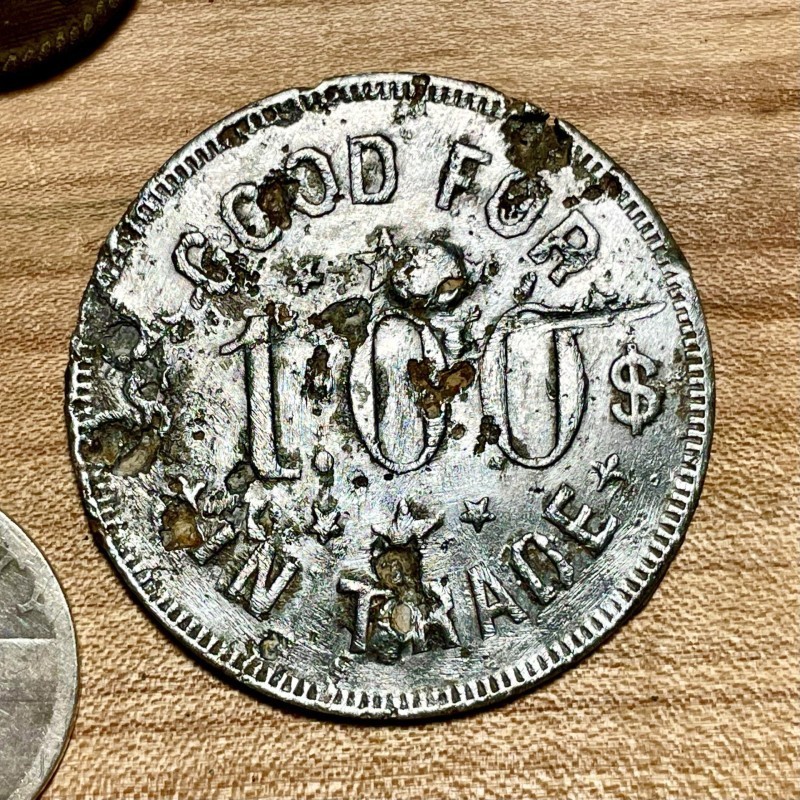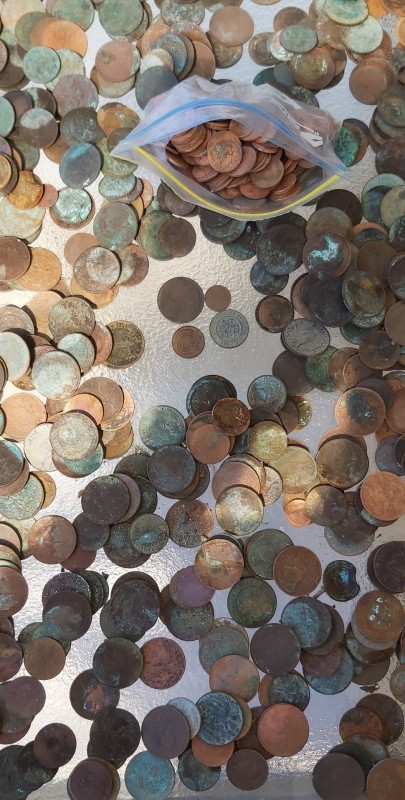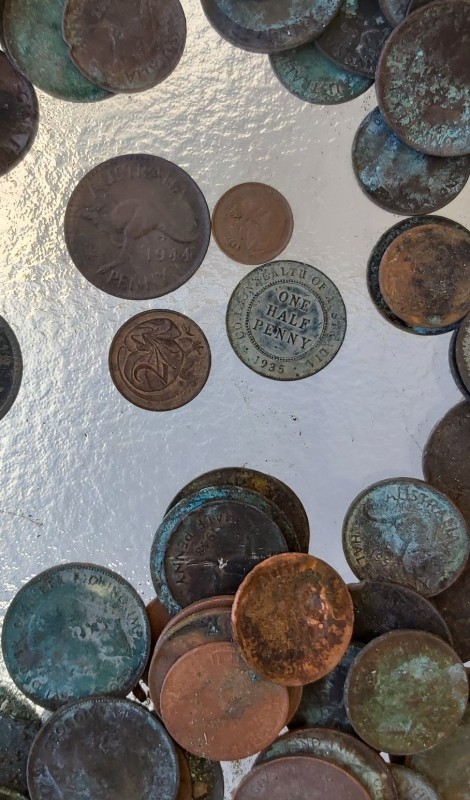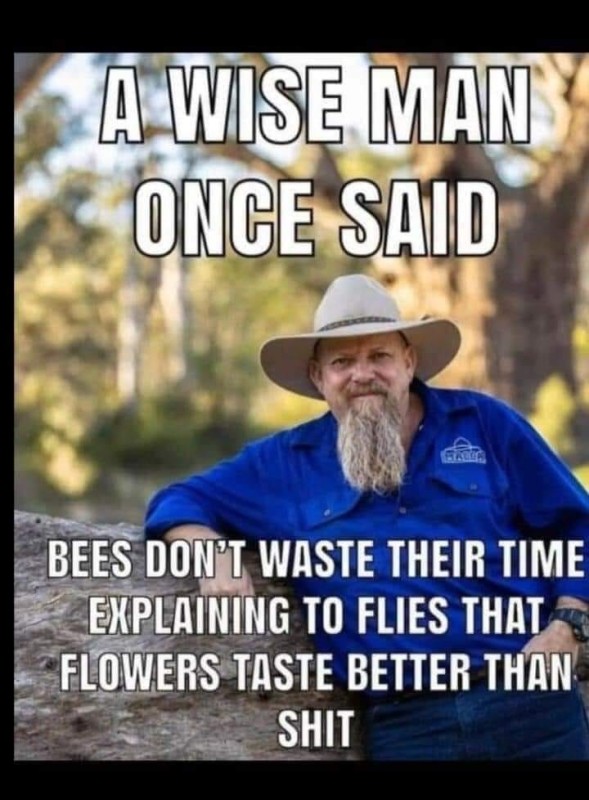-
Posts
1,936 -
Joined
-
Last visited
-
Days Won
5
Content Type
Forums
Detector Prospector Home
Detector Database
Downloads
Posts posted by geof_junk
-
-
8 hours ago, jasong said:
Note: you can have both salt and iron mineralization in the same soil. These are particularly noisy and difficult to detect.
These conditions alter with the dryness or moister content, so try detecting the area with different climate conditions.
-
Those Google Earth files I made from Aust/State Government's Data bases about 1999 and posted them for free in 2010 (https://golddetecting.forumotion.net/t2273-historical-gold-mines-in-google-earth) However a few months later so called "Con Artist" did a direct copy and tried selling them for $100 plus for a CD of them. I know they were copied as a couple of mines were from my direct finding that were not listed on Gov records.
The best way to find gold is to use mine locations their method of extraction, superimpose them on Geo Maps and take notice of the type of rock in that region and put in the footwork with your equipment.
-
 2
2
-
 1
1
-
-
I think adding 2 narrow rails to the polycarbonate might allow easier for dragging your skid pan with only a slight lose of height.
-
They are keepers for sure.
-
 1
1
-
 1
1
-
-
As a teenager (over 60 years ago) 4 of us explored this mine which was only locked off in some dangers spots. I panning in the area when I got my car driving licence, this was start of self prospecting with out others.
This YouTube goes for 45 minutes and worth every minute if you are interested in history in Victoria Aus. and describes advents and how they were solved.
This is the area of my old post.... A-bushwalk-though-walhalla-gold-area-with-grandkids
-
 2
2
-
 3
3
-
-
-
 2
2
-
-
I do look after the 92½% & 50% Silver coin rejects.
-
 1
1
-
-
-
 3
3
-
-
- Popular Post
- Popular Post
-
- Popular Post
- Popular Post
A link to channel 9 news article for the girls 15 Oct 2023
-
 9
9
-
 1
1
-
Gerry all I can say is that more than a mouth full. 😃
-
 2
2
-
-
In the late 1980s I made a PI from an electronic Magazine that I, altered some of their parts and settings. I was good at detection depth compared to the VLF detectors at the time (Garrett and Whites 6000) but the sound was like a clicking geiger counter (useless). It was very slow with the swings but handled the Golden Triangle soil but I decided to stick with the Garretts. Those were the days of coin plus size nuggets were you were first on the scene and swung at a very fast speed to get the cream before others. A work mate gave me a few dollars over it cost and used it on his farm for tracing pipes successfully. A year or two later a mate of my prospecting partner got one of the first Eric Foster PI and scored a few good nugget at Maryborough Vic.
-
 8
8
-
-
I am assuming that each pendent is lost due to the chain breaking. Note fine gold necklaces are made with a run of small loops that give a much less response than other bits of jewellery like pendants. Some people chasing chains use a high VLF signal to in prove their yield.
-
 2
2
-
-

The trade token has caught my attention, what is it history.
-
 2
2
-
-
Paddy Hannan statue vandalism in Kalgoorlie ............
https://www.abc.net.au/news/2023-10-12/paddy-hannan-statue-beheaded-in-kalgoorlie/102967482
-
 1
1
-
 4
4
-
-
Hope you have luck with finding them. AZ Outback and Nuggetshooter forums were two of the American Forum I was a member in. The same has happen here in Australia and I managed to contact a couple of old members that I knew a few years latter. It is disappointing when these forums and people you know fade away.
-
 1
1
-
-
Your tests also illiterate the advantages of mono coils for depth for that size targets even in those mineralized samples.
-
 5
5
-
-
2 hours ago, phrunt said:
Put on a Fluro vest and get embroidered on it Beach Cleaning Crew or something 🙂 People will think you're great cleaning the beach, a new government service.
And don't tell your wage 🤣
-
 3
3
-
-
I was just looking at the prices they got for most of those nuggets. they would be a lot higher in today value by around 150 times to day in $US or 225 $Aus
-
22 hours ago, Valens Legacy said:
What ever detector that you may use know what the ID numbers are of the coins that you would normally find.
I always do a test with the coil that I am going to use and place coins in my garden that I expect to find where I plan to hunt.
That way you can cherry pick which targets to dig. I found that when I am digging in an area that is newer it is always with a lot of trash from who knows where. I will concentrate on the silver first and then go to the other items on my list and have much better luck.
Everyone has given you the best advice and I hope that we have helped in some sort of way.
In general if you start on the highest target ID that you are chasing, it will let you know if the location has not been hit hard and allows you to cover a lot of the spot with out being bogged down digging junk. If you get some good targets, Then you lower your ID and get more good targets it lets you know whether to go more aggressive and dig every target.
Also you can lower your sensitivity if the targets are shallow to make the ID less influence by the ground minerals and very small bits of junk.
-
 2
2
-
-
"July 11 2002" ............ post shows the importance of the pan and sampling before going whole hog into a spot.
-
 3
3
-
-
I like the TEN to ONE ratio of coins to Aluminium pull tabs. ☠️ That is good indication of ID capabilities of the Manticore, 🤑 or should I say skill of operator. 😉
-
Largest gold nugget
In late 2018, miner Henry Dole - an employee of RNC Minerals - found what is now claimed to be the largest ever gold nugget. While digging in the Beta Hunt mine near Kambalda in Western Australia , Dole found a gold nugget weighing 89 kg, beating all the others on our list, and the previous historical leader, the Welcome Stranger.
The nugget is still waiting for verification of size and purity to claim its place as the world's largest gold nugget. Once determined, the gold nugget can receive an estimated value, but it will be worth millions for the gold content alone. Given its new claim as the world’s biggest gold nugget it will undoubtedly fetch a price into the tens of millions thanks to its rarity.
List of nuggets[edit]
Name Discoverer(s) Location of discovery Country Date Gross weight Net weight Notes References Welcome Stranger John Deason and Richard Oates Moliagul  Australia
Australia
1869 2,520 ozt (78 kg; 173 lb) 2,284 ozt (71.0 kg; 156.6 lb) Found only 3 cm (1.2 in) below the surface, near the base of a tree [5] Welcome Nugget Red Hill Mining Company Bakery Hill, Ballarat  Australia
Australia
June 1858 2,218 ozt (69.0 kg; 152.1 lb) Melted down in London in November 1859 [6] Canaã nugget also known as the Pepita Canaa[a] Serra Pelada Mine State of Pará  Brazil
Brazil
September 13, 1983 1,955 ozt (60.8 kg; 134.1 lb) 1,682.5 ozt (52.33 kg; 115.37 lb) Largest in existence [9] W. A. Farish, A. Wood, J. Winstead, F. N. L. Clevering, and Harry Warner Sierra Buttes  United States
United States
August 1869 1,593 ozt (49.5 kg; 109.2 lb) Sold to R. B. Woodward for $21,637 [10] Serra Pelada Mine State of Pará  Brazil
Brazil
1,506.2 ozt (46.85 kg; 103.28 lb) Displayed at the Banco Central Museum in Brazil [11] Serra Pelada Mine State of Pará  Brazil
Brazil
1,393.3 ozt (43.34 kg; 95.54 lb) Displayed at the Banco Central Museum in Brazil [11] Lady Hotham Ballarat, Victoria  Australia
Australia
1854 1,170 ozt (36 kg; 80 lb) 17 dwt. of gold Named after the wife of Governor Charles Hotham [12] The Golden Eagle Jim Larcombe and son Goldfields-Esperance, Western Australia  Australia
Australia
1931 1,135 ozt (35.3 kg; 77.8 lb) Sold to and melted down by state government [13] The Heron Golden Gully in the Mount Alexander goldfield  Australia
Australia
1855 1,008 ozt (31.4 kg; 69.1 lb) Miners found the nugget on their second day of digging [14] Hand of Faith Kingower, Victoria  Australia
Australia
1980 875 ozt (27.2 kg; 60.0 lb) Found using a metal detector [15] Fricot Nugget William Davis Sierra Nevada and Northern California goldfields  United States
United States
1865 201 ozt (6.3 kg; 13.8 lb) Sold for $3500 to Jules Fricot, who sent it to the 1878 Paris Exposition. On display at the California State Mining and Mineral Museum. [16] Dogtown Nugget Chauncey Wright for Phineas Willard, Ira Weatherbee and Wyatt M. Smith. Magalia, California  United States
United States
1859 648 ozt (20.2 kg; 44.4 lb) Sold to the San Francisco Mint for $10,600 [1 -
 3
3
-
 1
1
-
-






Speaking Of Tailing Piles . . .
in Detector Prospector Forum
Posted
We do have them in Aust too. Back in 1980 Carol and I detected a road that was made from a deep lead tailings. Gold was found but 1980 VLF Tec knowledge and ferrous junk made it very hard to get small bits of gold out of the hard packed road and prevent vandalism of the road.